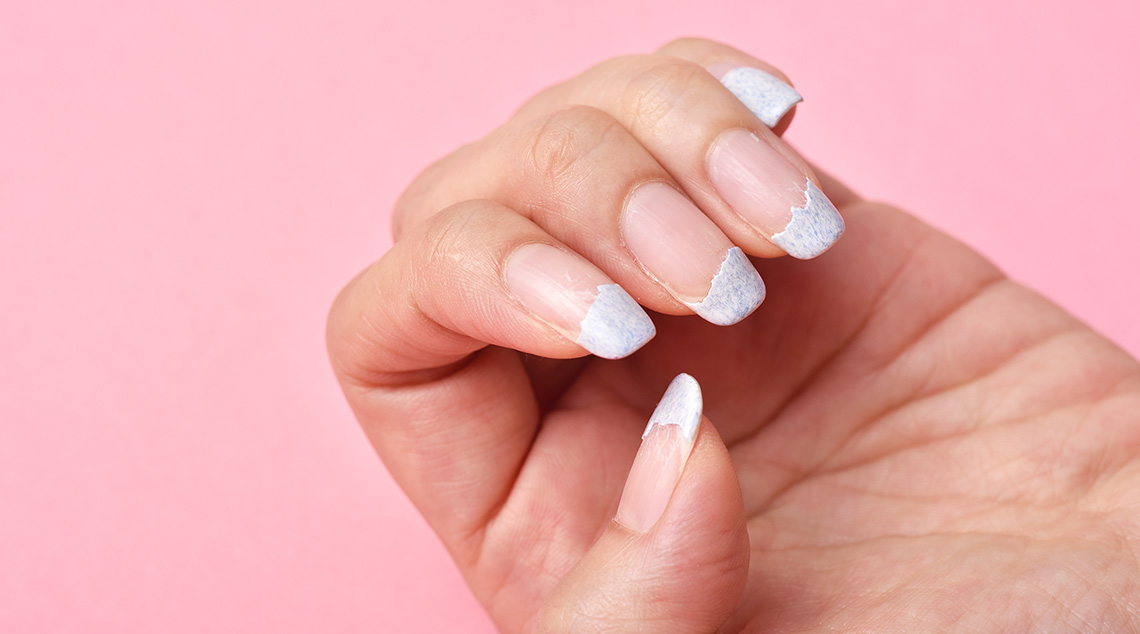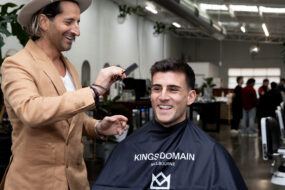How to fix damaged nails after gel or acrylic manicures
Have your nails become brittle or paper-thin since your last gel or acrylic manicure? Experts reveal their top tips for restoring nail health.
Whether you prefer glossy gel nails or a set of glam acrylics, it’s hard to resist the allure of beautiful fingertips.
The flipside, however, is the damage that can sometimes occur after a manicure.
Paper-thin, dry or brittle nails may be a sign that your favourite beauty treatment has taken its toll.
Sound familiar? Don’t fret — here is how to bring damaged nails back to their former glory.
How do gels and acrylics damage natural nails?
It turns out the culprit may not be the actual acrylics or gels.
“Nail enhancement products such as acrylic, hard gel or soft gel cannot damage the nail by itself,” nail technician and Nail Ink founder Chelsea Raselli says.
The damage will come from overpreparation of the nail plate through too much filing or buffing, improper removal, or ripping or peeling off gel or acrylic nails, Chelsea explains.
What is the best way to remove gel nails and acrylics?
Chelsea says most well-trained nail technicians will try to avoid prolonged exposure to acetone, as it can dry the nail out.
To do this, they will file most of the polish off first — unless it is a shellac manicure, which is a hybrid of nail polish and gel, and which needs to be entirely soaked off with acetone.
“During the removal process, there should be no buffing or filing of the natural nail,” Chelsea says.
“Only the product is filed to de-bulk it and then (nails are) soaked in acetone to remove the remaining product.”
Acrylics should be removed in much the same way, using a two-pronged approach of filing to remove much of the nail enhancement, then using acetone to remove the remaining product.
How to fix damaged nails after a manicure
If your natural nails have been severely damaged after gels or acrylics and you want to fix them, dermatologist and Complete Skin Specialists director Dr Cara McDonald says to expect the process to take around three to four months — this is how long a new nail will take to grow out.
Getting healthy nails again can depend “on the degree of damage and many general health factors,” Dr McDonald notes.
There is no need to let nails “breathe” between manicures as nails are composed of a protein called keratin and do not consist of living tissue, she says.
To repair damaged nails, Dr McDonald recommends the following:
- Use protection: Wear gloves during cleaning or washing up and limit exposure to water as this will further dry out and weaken your nails.
- Take it off: Remove nail polish or acrylics if your nails are dry and flaking, and apply a cuticle oil or moisturiser to help improve their condition and the strength of new nails which, over time, will grow to replace damaged nails.
- Go hard: Try using a nail strengthening product but bear in mind its efficacy will depend on how damaged the nails are — sometimes there’s no way to repair your nails other than to wait for them to grow out.
- Embrace short nails: Keep your nails as short as possible to avoid further splitting and breaking.
- Load up on nutrients: Include nutrients in your diet that may help support healthy nail growth, such as biotin, zinc, iron and vitamin C.
More on nail treatments and trends:
- Why you need to try a Russian manicure
- How to flaunt a flawless French manicure
- Short and sweet: Why you’ll want to wear minimalist nails
- Why grey is this season’s go-to hue for neutral nails
- The best nail art designs to try
Written by Tania Gomez.




